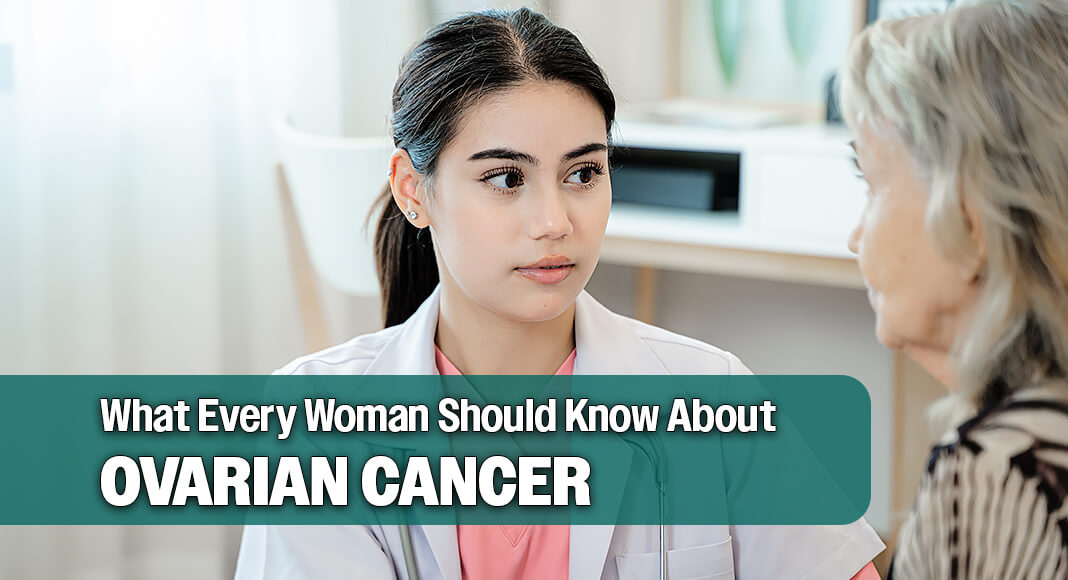
Mega Doctor News
Newswise — September is Ovarian Cancer Awareness Month, a time to spotlight a disease that remains one of the deadliest gynecologic cancers. To help raise awareness and share expert insights, Dr. Pedro T. Ramirez, chair of the Department of Obstetrics and Gynecology at Houston Methodist, answers some common questions about ovarian cancer.
How prevalent is ovarian cancer?
In 2025, more than 20,000 women in the U.S. will be diagnosed with ovarian cancer, and roughly 60% of those diagnosed will die from it. Despite representing only 1% of all new cancer cases, ovarian cancer is the fifth leading cause of cancer-related death among women.
Who is most at risk for ovarian cancer?
The biggest risk factor is age—ovarian cancer happens most often in women over 50, especially after menopause. A woman’s family history also matters. If close relatives like a mother, sister, or daughter have had ovarian, breast, or colorectal cancer, her risk is higher. Inherited gene changes, such as BRCA1 or BRCA2 mutations, greatly increase the chance of developing ovarian cancer. Other factors include not having had children, starting menstruation very young or reaching menopause late, and conditions like endometriosis. Still, most women who develop ovarian cancer do not have a known genetic mutation or family history, so every woman should be aware of the symptoms.
What are some of the symptoms of ovarian cancer?
Ovarian cancer symptoms are often subtle at first. Common signs include persistent bloating or swelling of the belly, feeling full very quickly when eating even small amounts, ongoing stomach, back, or pelvic pain, frequent or urgent need to urinate, changes in bowel habits like constipation or diarrhea, and unexplained fatigue or weight loss. Because these symptoms are also caused by common digestive or urinary problems, they’re easy to dismiss. The key difference is when they happen almost daily for weeks and don’t go away.
Why can a diagnosis be difficult?
Ovarian cancer is sometimes called a “silent disease” because early symptoms can be so nonspecific. Many women—and even doctors—may assume it’s just gas, irritable bowel syndrome, or aging-related bladder issues. Another challenge is that there is no effective routine screening test. Unlike cervical cancer or breast cancer, there’s no simple, reliable test to detect ovarian cancer early in healthy women. By the time it’s diagnosed, the cancer is often already advanced, which makes it harder to treat.
What treatments are available today?
Fortunately, patients have lots of options these days. Surgery is the first step—a gynecologic oncologist removes as much of the tumor as possible, which may include the ovaries, fallopian tubes, uterus, and sometimes parts of nearby organs. After surgery, most women receive chemotherapy. We also have targeted therapies like PARP inhibitors, which are drugs that block cancer cells from repairing themselves, especially effective in women with BRCA mutations. These have been one of the biggest advances in ovarian cancer treatment in the last decade. Immunotherapy is another option, though still experimental and mostly used for recurrent disease. And many women participate in clinical trials testing promising new treatments.
What are the latest advances impacting survival?
In the past decade, ovarian cancer treatment has improved significantly. PARP inhibitors have been game-changers for women with BRCA mutations or other genetic weaknesses in their cancer cells. These drugs can be taken as maintenance therapy after chemotherapy to keep the cancer from coming back longer, typically for two years. We also now perform more advanced genetic and molecular testing, analyzing each patient’s tumor for specific gene mutations. This allows us to personalize treatment rather than use a one-size-fits-all approach. Combination therapies, such as PARP inhibitors with immunotherapy or other targeted drugs, are showing promise in clinical trials. All of these approaches have helped women live longer and with a better quality of life. The changes in survival are blatantly different from what they were 10 to 15 years ago.
Ovarian cancer remains a formidable challenge in women’s health, but as Ramirez emphasizes, awareness, early recognition of symptoms, and access to evolving treatment options are key to improving outcomes.









